A Depression Treatment with Mushrooming Potential
“Magic mushrooms” show great promise for treating stubborn depression. And research at UCSC could someday lead to a pill that delivers these psychedelics’ therapeutic promise without hallucinations, Anna Marie Yanny reports. Illustrations by Julia Kawai and Mica Carr.
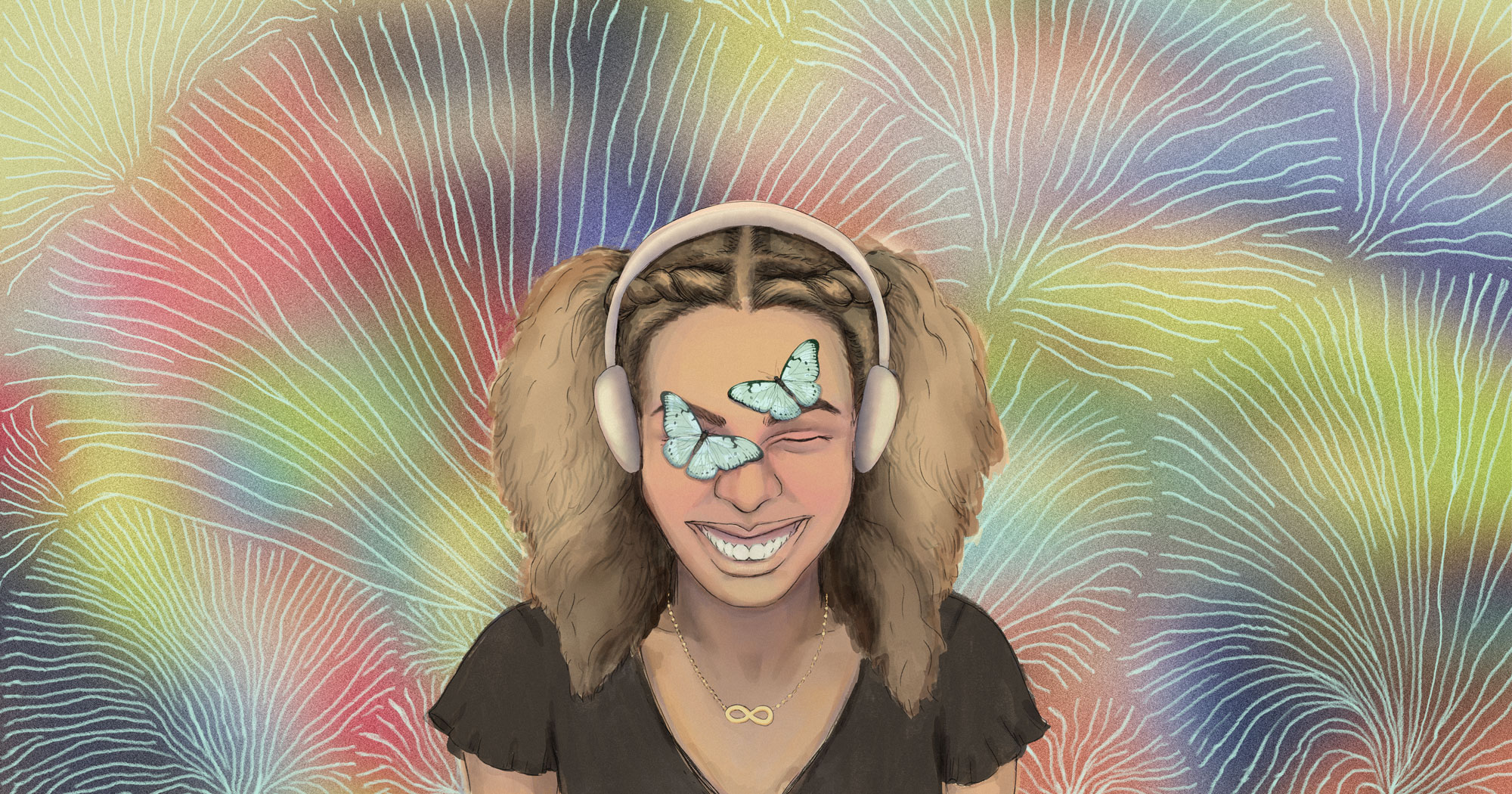
On an August morning in Baltimore, Diamond was tripping. The mom and entrepreneur sat cozy under a weighted blanket at Sheppard Pratt Hospital and watched as little mushroom people jumped across imaginary flower petals behind her eye mask. A therapist sat close by, ready to serve Diamond cold Chick-fil-A and depression questionnaires.
In the weeks leading up to today, clinicians had asked Diamond, “Can you remember a time when you were happy for more than a month?” No, she thought. In fact, she was having “passive” suicidal thoughts, such as, “If this car ran into me and I died…things would be okay.”
Such thoughts weren’t new for Diamond; she had been hospitalized for self-harm as a teenager. But despite being hospitalized about six times, trying a variety of antidepressants and going to therapy, her depression had followed her since adolescence. She was curious if a clinically-guided mushroom trip would help.
So Diamond had enrolled as one of 15 participants testing the safety and efficacy of psilocybin, the psychoactive ingredient in “magic mushrooms,” in a clinical trial for Type 2 Bipolar Disorder Depression. As cute mushroom people danced before her eyes, she breathed, remembering the intention she had set with her therapist earlier: self-grace.
Like Diamond, about 280 million people worldwide have depression. For some, traditional medications don’t work. Researchers are racing to study whether psilocybin could help. Now, while clinicians probe psilocybin’s safety and efficacy in humans, scientists including neuroscientist Yi Zuo of UC Santa Cruz are studying how the drug works in mouse brains. Such research could someday lead to a pill engineered to deliver the therapeutic promise of psychedelics without their trademark hallucinations.
Zuo, an earnest, quick talker with physician parents, knows that her research won’t reach clinics anytime soon.
“My dad used to say: ‘this is so basic, when will it apply to humans?’…and I think there’s a long way to go, but someone has to do it,” Zuo said. “It helps us understand the biological mechanism.”
Diamond tried many medications for her depression over the years, including Seroquel, Prozac, Trazodone, and Risperidone, or, as she calls them, “a lot of ‘dones,’ a lot of ‘ols.’” Some of them helped her sleep, but left her feeling numb. She recalls thinking, “I still feel sad, so what are we doing here, antidepressants?”
A drug with mushrooming potential
Diamond was raised by a mom with symptoms of borderline personality disorder, a condition characterized by unstable relationships and trouble managing emotions and behavior.
Growing up with her mom, Diamond often felt trapped. She would run away from home, sometimes self-harm and thus, land in the hospital, she said.
Years later, after multiple hospitalizations and a slew of ineffective antidepressants, Diamond got a medical marijuana card to help treat her depression-induced insomnia, meaning she’s qualified to buy medical cannabis in her state. She also began experimenting with “magic” mushrooms, which are fungi that trigger hallucinations. In doing so, she became part of a centuries-old tradition.
Archeological evidence suggests humans have been eating mind-altering plants for thousands of years, perhaps even before they learned how to ferment alcohol. In the sixteenth century, a Spanish friar documented native groups in Mexico using psilocybin in ceremonies.
Centuries later, in the 1950s, María Sabina, a Mazatec traditional native healer, introduced the mystic fungus to American amateur mycologist R. Gordon Wasson at an indigenous ritual in Mexico. Wasson then wrote a photo essay published in Life Magazine that introduced psilocybin to a wide Western audience. Intrigued, in the late 1950’s and 60’s Western psychiatrists began to study psilocybin’s mind-opening properties and potential mental health benefits.
Outside of the lab, the 1960’s U.S. counterculture movement embraced psychedelic mushrooms. Not long after, they were prohibited by the U.S. Controlled Substances Act, which President Nixon signed into law in 1970. The legislation classified psilocybin as a Schedule I substance, meaning it has “no currently accepted medical use and a high potential for abuse.” The claim significantly hindered psilocybin research for decades.
Legal experts are now advocating for reclassification of psilocybin, saying citing research that it has low addiction potential. Psilocybin is also hard to overdose on. For instance, one study predicted a human would need to ingest 1000 times more than an “effective” dose of psilocybin for it to be lethal.
Despite legal roadblocks, psilocybin research clawed its way back from obscurity in the mid-2010’s. In 2006, participants in a small Johns Hopkins study were given psilocybin and surveyed two months later, saying their mystical experience on the drug resulted in months-long positive attitude changes.
Today, researchers hope the drug will be a welcome addition to the antidepressant toolkit, which hasn’t grown much since the rise of medications like Prozac in the 1980s. These traditional medications, while lifesaving for many, can take weeks to work if they work at all. Psilocybin, however, may help after one dose, according to a recent phase 2 clinical trial for treatment-resistant depression.
“There is a lot of hype right now,” said Steve Levine, a Senior Vice-President at Compass Pathways, a company that helps run many psilocybin trials, including Diamond’s. “I get it… but I think it’s important that we don’t get ahead of the evidence.”
Research has shown that when it comes to stubborn forms of depression, psilocybin may help when traditional antidepressants don’t. For example, in a 2017 trial testing psilocybin for treatment-resistant depression, all 19 participants improved one week after taking the drug, and many maintained lower depression symptoms weeks later. The authors of this trial noted that larger, rigorous trials must be run to confirm these findings.
The Food and Drug Administration (FDA) recently put the drug in a fast lane for review. Because psilocybin may outdo available treatments, the FDA granted “breakthrough therapy” status to two programs testing the drug for stubborn forms of depression. This helps make trials more efficient as psilocybin steps towards anticipated FDA approval, meaning drug companies could sell it to the public.
Now, companies and universities are running dozens clinical trials to test whether psilocybin is safe and effective. Additionally, over 100 companies are operating in the psychedelics healthcare space, according to the business information platform Crunchbase.
Her guests – including author Michael Pollan – mentioned that there was a lack of Black participants in some psychedelic studies and a scarcity of black “guides” to administer the drugs and help patients through their experiences.
That thought resonated with Diamond, who’d been streaming the show during her cardio workout.
“We don’t see a lot of people who look like us talking about what [psilocybin has] done for us,” Diamond said.
After the “Red Table Talk” episode, Diamond found the clinical trial in Baltimore and enrolled in April 2022. The trial began with weeks of prep work: Diamond weaned off psychoactive medications, met with a trial therapist and took depression surveys. Then, in August, she ate a few psilocybin pills under a therapist’s supervision, and worked with them to “integrate” her experience.
After the trial Diamond woke up one morning, energized. She knocked out her to-do list, worked out and left early to pick up her 6 -year-old daughter from school. Music drifted through her car speakers as she sat in the sunny school parking lot, waiting for the “school’s out” announcement.
“I thought to myself for the first time in forever that it would really suck to die today,” Diamond teared up, recalling it. “And that was so profound because I had never felt that way in my whole entire life.”
“I’ve had recreational experiences, but the clinical one helped open my eyes to the healing that actually can happen,” Diamond said.
Her experience reflected what others have seen. Despite its illegal status, people use psilocybin underground for religious or therapeutic experiences. Therapist Emma Knighton, of Washington has seen psilocybin help some of their depressed clients who have tried everything. Knighton watched clients’ mental health stabilize as they weaned off common antidepressants and begin using psilocybin with psychiatrist support.
“Every time one of the research studies gets published, my reaction is always, Oh, I’m so glad someone proved something we already knew,” Knighton said.
“I thought to myself for the first time in forever that it would really suck to die today,” Diamond teared up, recalling it.
“Basic” science
On the day Diamond took psilocybin for the clinical trial, scientists know that the drug flooded her brain, acting like the mood-influencing molecule, serotonin, a naturally occurring brain chemical. Psilocybin activated proteins on her neurons that are typically triggered by serotonin and launched her into hours-long hallucinations. But beyond that, scientists don’t know exactly how the drug painted colors onto her dark eye mask or turned the songs in her headphones to fairytales.
Neuroscientist Yi Zuo is curious to find out.
“In humans, there are a lot of psilocybin clinical trials everywhere but we don’t know the mechanism,” Zuo said. She’s set out to understand it, in mice, whose cellular architecture is surprisingly similar to ours.
When mice are stressed, it shows. They act more anxious and they lose connections in key areas of their brain. Zuo’s lab was curious if a psychedelic-like compound could help.
In 2021, they found that stressed mice had fewer anxiety behaviors after a single dose of a non-hallucinogenic psychedelic analog, unrelated to psilocybin.
Zuo was surprised and excited by the behavioral recovery. “I don’t believe in magic bullets,” she said. “If this drug works clinically and has no side effects, it could be an amazing drug.”
The non-hallucinogenic compound encouraged lost connections between some neurons to reappear. These connections were formed by “spines,” that help neurons talk with one another.
The brain’s ability to grow such connections, known as neuroplasticity, could be the puppet master pulling the strings behind psilocybin’s therapeutic potential.
“One of the amazing things about psychedelics is that they are doing two things at once,” said Zuo’s graduate student, Jacob Baker. “They’re giving you this profound change in consciousness. But at the same time, we suspect they’re priming your brain for neuroplasticity, so you can encode these experiences and integrate them into your life over the long term.”
Researchers have found that psilocybin sparks neuroplasticity — measured by spine growth — in mice. Baker and Zuo don’t know if hallucinations are irrevocably linked to neuroplasticity, but they’re curious to find out. So, they are investigating which brain cells are necessary for spine growth and hallucinations in genetically engineered mice.
“It’s very, very basic research, but I think it’s very crucial to see even IF it’s possible to isolate this,” Zuo said. “Maybe there’s no way to separate the hallucination and the spine growth.”
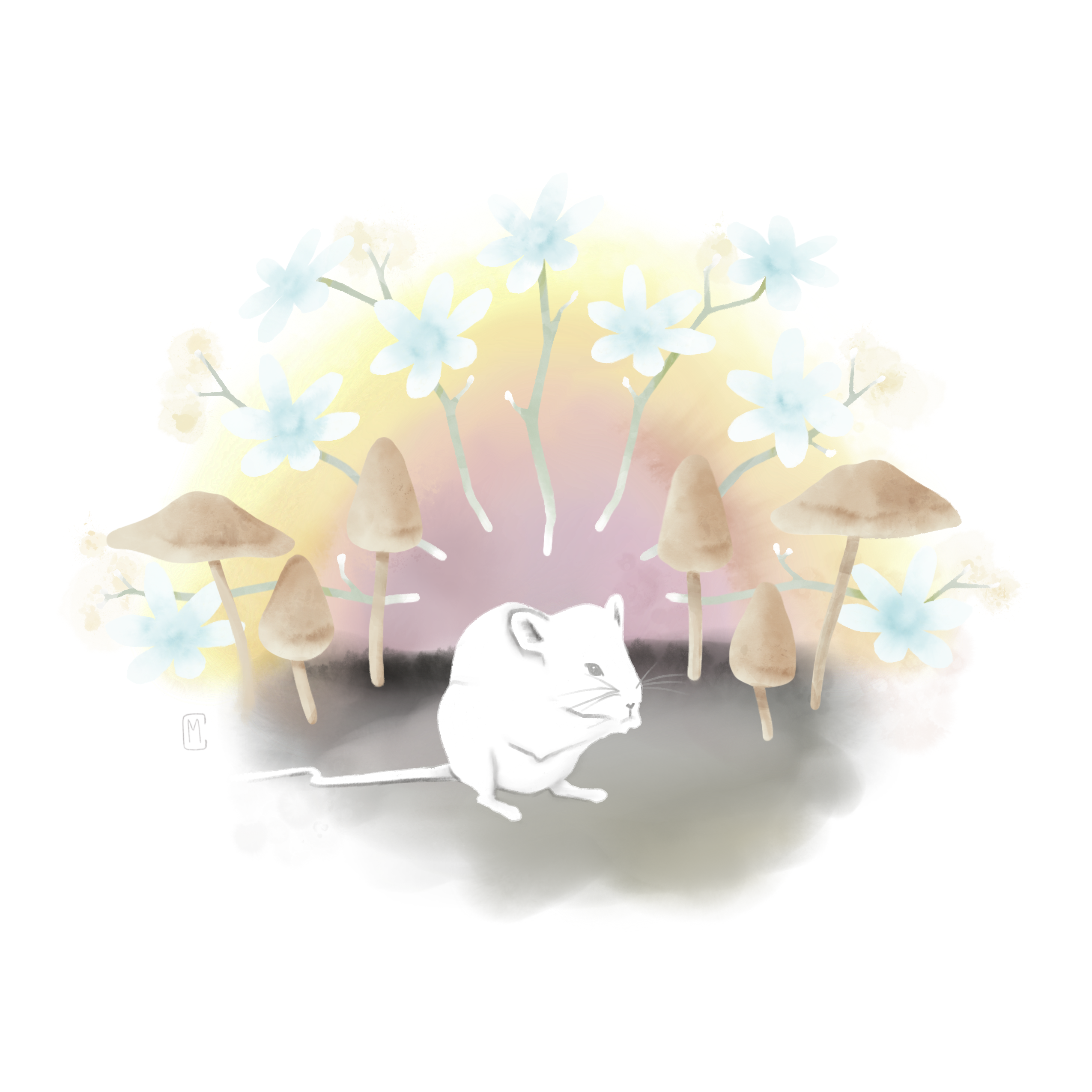 Yi Zuo’s neuroscience lab is investigating which brain cells are necessary for spine growth and hallucinations in mice. Illustration by Mica Carr.
Yi Zuo’s neuroscience lab is investigating which brain cells are necessary for spine growth and hallucinations in mice. Illustration by Mica Carr.
The debate: are hallucinations necessary?
Some scientists are skeptical that psilocybin’s therapeutic promise could be separated from its “trippy-ness.” “My hunch is it’s going to be very difficult if not impossible to completely dissociate the two,” said neuroscientist Robert Malenka, Deputy Director of Stanford’s Wu Tsai Neurosciences Institute. Preliminary studies have linked the strength of participants’ mystical experiences on psychedelics to their therapeutic outcomes. Without hallucinations, could a psilocybin analog really rival traditional antidepressants?
On the other hand, it’s possible that hallucinations are merely correlated with psilocybin’s therapeutic potential, while other brain processes are causing it. If so, it might be possible to tap into these brain processes and treat people without triggering hallucinations, said neurologist Gitte Moos Knudsen of University of Copenhagen, Denmark and Rigshospitalet.
One of Zuo’s collaborators, David Olson of UC Davis, is attempting to engineer drugs that strategically trigger neuroplasticity, to hopefully rewire the brain circuits behind stress and depression.
Neuroscientist D. Parker Kelley of UC San Francisco, who helps run clinical trials like Diamond’s, thinks Olson will make something that’s better than current antidepressants but won’t replace the psychedelic experience in all cases.
Diamond thinks the hallucinations she moved through during the clinical trial were necessary for the powerful experience she had on psilocybin. She adopted a “go with the flow” mantra as she felt feel trapped in a coffin during one song, and then reborn in the next.
But Diamond can see how a shorter-acting hallucinogen might be more cost-effective.
An expensive trip
Unlike traditional antidepressants, psilocybin isn’t covered by insurance, rising concerns about moving it from research settings to clinics.
Psilocybin is also illegal federally, though a few places – including Denver, Oakland, Oregon and Washington D.C. – have decriminalized it. In those regions, enforcing the drug’s federal ban is the lowest priority for local law enforcement.
Because of its illegal status, some African Americans may be hesitant to try it.
“A white person gets caught on mushrooms, they get a slap on the wrist, and we get caught with mushrooms and we’re thrown in jail,” said Diamond. “And we’re like, scared as hell because we’re tripping while we’re in jail with all these other people who are probably actually criminal.”
No miracle cure
Psilocybin is no magic bullet.
Clinicians discourage people from taking it without a therapist or “guide”. They also avoid giving the drug to patients who are actively suicidal or experience psychosis, for fear of making it worse. In a large phase 2 clinical trial for treatment-resistant depression, some participants had worsening suicidal states — marked by suicidal ideation and self-injury — after taking psilocybin. The American Psychiatric Association states that there is not enough evidence to support the use of psychedelics outside of clinical trials.
Psychedelics won’t help everybody, said neuroscientist Robert Malenka. It’s also difficult to curb the placebo effect with these drugs, because participants know they received a hallucinogen and may expect therapeutic benefits to follow.
“The history is you try something new, like ketamine or psilocybin, and it looks very promising and everybody gets really excited by it,” Malenka said. “And then you learn they’re not miracle cures. They help some patients but not others”
As for Diamond, it definitely helped. Before the trial, Diamond needed control in her life. Now, she gives herself grace if she doesn’t complete her to-do lists or edit a video for her business promptly. She still microdoses psilocybin, and said it gives her a superpower to be unphased by road rage and compassionate towards difficult people.
“I don’t know that necessarily, that you can cure depression, but whatever the closest thing to curing it is that’s what psilocybin did for me,” Diamond said.
© 2023 Anna Marie Yanny / UC Santa Cruz Science Communication Program
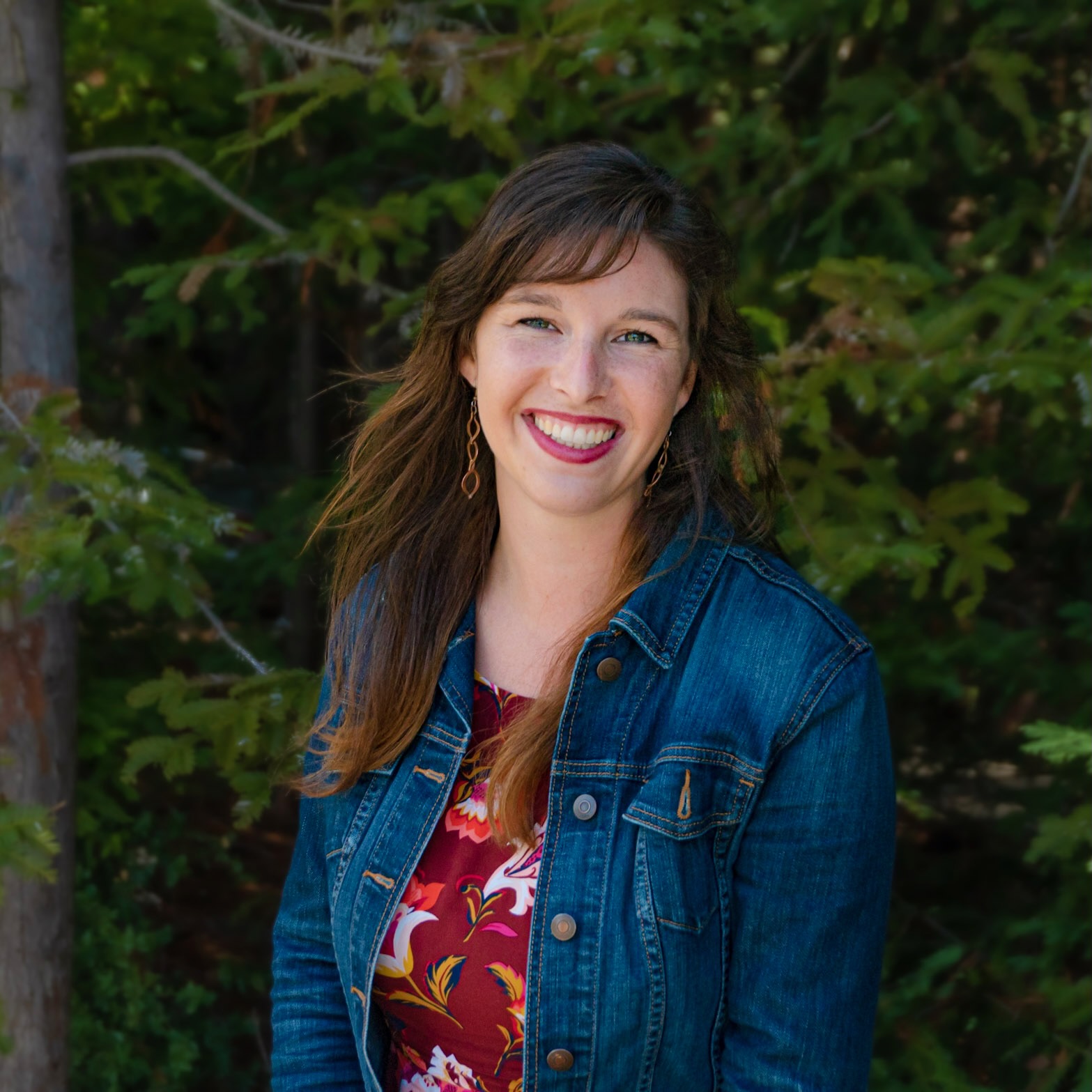
Anna Marie Yanny
Author
Internships: Monterey Herald, KQED Science, Stanford University School of Medicine
What makes us human? I could tell you by reciting poetry or by mapping the cells in your brain. For my career, I chose the latter. Poetry found ways to creep in.
In college, for instance, I remember asking my neuroscience professor if learning that love is caused by chemicals in your brain dampens its magic. Just the opposite, he said: “Learning that there is a neurochemical dance behind the human experience is what makes it so fun to study.”
Ah, I thought: poetry.
Now, after working as a neuroscience researcher for four years, I’m pivoting to a career in both. I want to write metaphors about cerebrospinal fluid and ocean tides. I want to host radio programs about our mind’s resilience.
And I want to watch your eyes light up when I explain that love is all just a neurochemical dance.
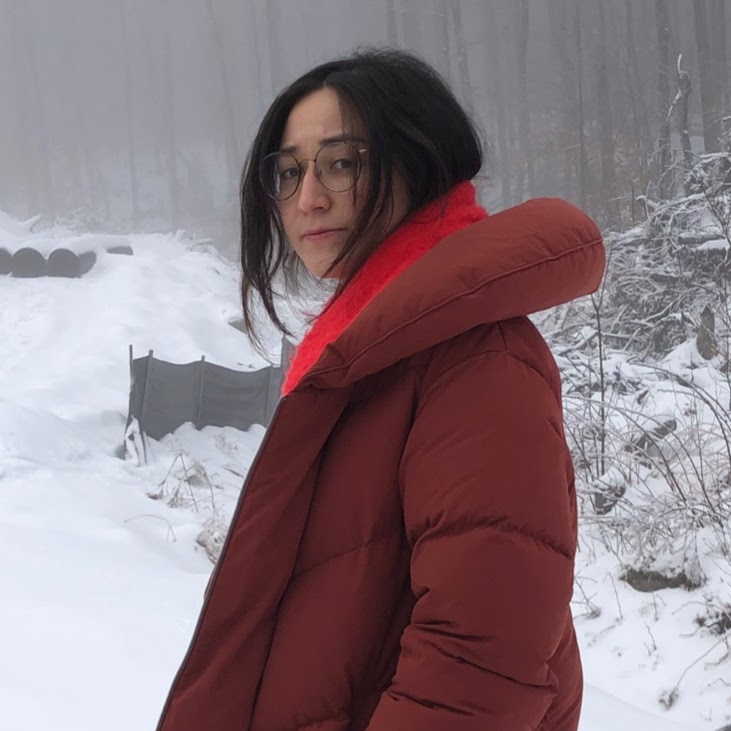
Julia Kawai
Illustrator
Internship: Reef Renders
During my undergraduate studies in Studio Art, I learned how to let go of the way I believed things appeared in order to see how they actually are. Over time, I developed a lens through which I could confidently observe the world and think critically about my role within it. However, though I declared myself an Artist, I also clung to the identity as protection while cowering from more technical fields.
With time, I’ve begun to shed the preconceived notion that I don’t belong in technical fields. I’ve learned that science and art are united in their interrogation of our beliefs in pursuit of greater truths. Through scientific illustration, I hope to spark people’s curiosity and enrich their understanding of the world around them. In doing so, I hope to break down some of the barriers that lead many, like myself, to believe that science is not for them.
Instagram: @planet_earthstar
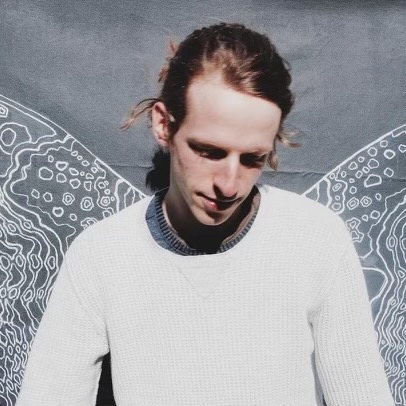
Mica Carr
Illustrator
University of North Carolina, Chapel Hill, North Carolina
Internship: Inkdwell Studio
My favorite memories from childhood include family camping trips timed for meteor showers or the ripening of berries. I was homeschooled in this way for several years in the Appalachian mountains of North Carolina. Among my favorite possessions was a stash of National Geographic magazines gifted to me by my grandparents. I poured through them endlessly during middle school, and snipped them apart for art projects throughout high-school. I immediately gravitated to an undergraduate degree in Geography, to which I added Economics. An infographic design course my final semester flipped a switch and directed the first years of my professional work towards freelance graphic design. I’ve spent the last three years with a tech-based interior design company that sits at the intersection of art, design, and technology. I’m excited to get back to nature and combine all of these skills in a way that promotes ecology!
Instagram: @liminaldesignlab